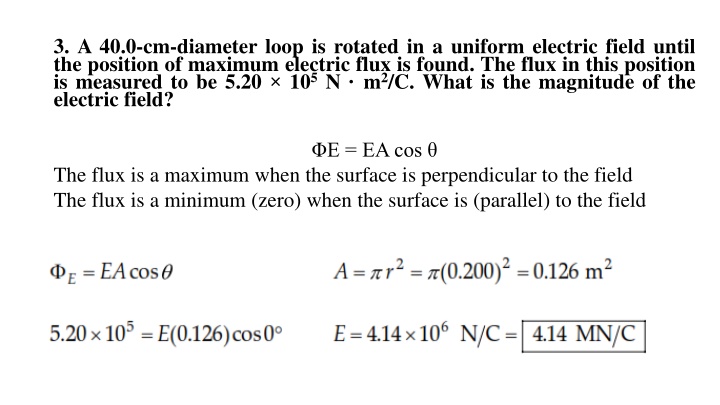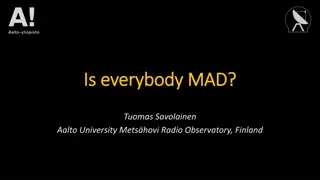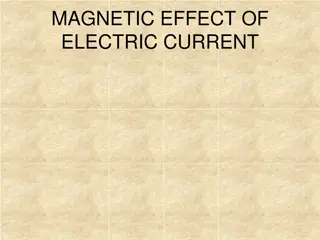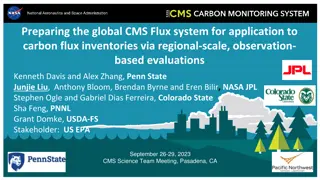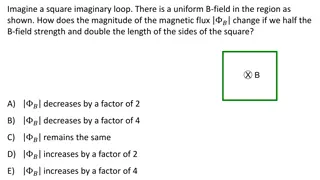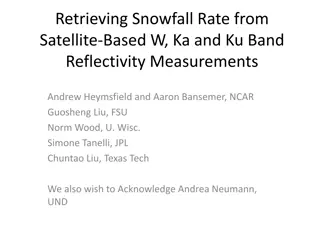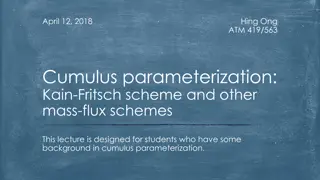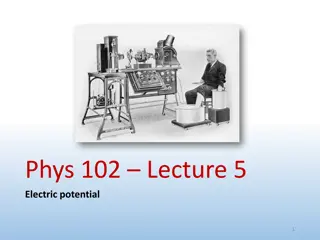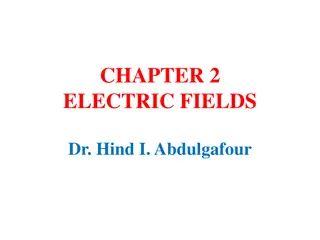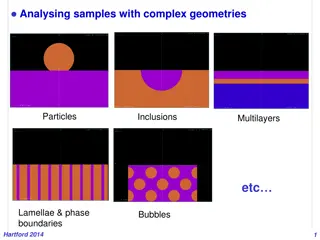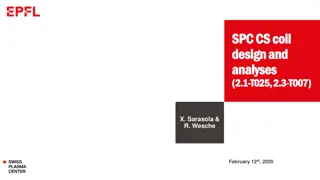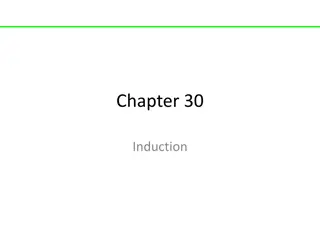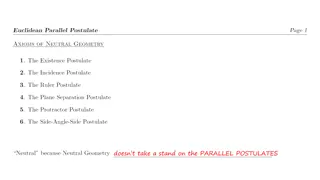Electric Field and Flux Calculations in Different Geometries
Explore various scenarios involving electric fields and flux calculations, such as finding the magnitude of electric fields in different situations, determining electric flux through surfaces, assessing net electric flux through charges in a submarine, and analyzing flux through faces of geometric shapes like cubes and spheres. The content covers scenarios like rotating loops in electric fields, closed surfaces with charges, and the distribution of charges in shapes like spheres and shells.
Download Presentation

Please find below an Image/Link to download the presentation.
The content on the website is provided AS IS for your information and personal use only. It may not be sold, licensed, or shared on other websites without obtaining consent from the author.If you encounter any issues during the download, it is possible that the publisher has removed the file from their server.
You are allowed to download the files provided on this website for personal or commercial use, subject to the condition that they are used lawfully. All files are the property of their respective owners.
The content on the website is provided AS IS for your information and personal use only. It may not be sold, licensed, or shared on other websites without obtaining consent from the author.
E N D
Presentation Transcript
3. A 40.0-cm-diameter loop is rotated in a uniform electric field until the position of maximum electric flux is found. The flux in this position is measured to be 5.20 105N m2/C. What is the magnitude of the electric field? E = EA cos The flux is a maximum when the surface is perpendicular to the field The flux is a minimum (zero) when the surface is (parallel) to the field
4. Consider a closed triangular box resting within a horizontal electric field of magnitude E = 7.80 104 N/C as shown in Figure P24.4. Calculate the electric flux through (a) the vertical rectangular surface. (b) the slanted surface, and (c) the entire surface of the box.
9. The following charges are located inside a submarine: 5.00 C, 9.00 C, 27.0 C, and 84.0 C. (a) Calculate the net electric flux through the hull of the submarine. (b) Is the number of electric field lines leaving the submarine greater than, equal to, or less than the number entering it?
11. Four closed surfaces, S1 through S4, together with the charges 2Q, Q, and Q are sketched in Figure P24.11. (The colored lines are the intersections of the surfaces with the page.) Find the electric flux through each surface.
21. A charge of 170 C is at the center of a cube of edge 80.0 cm. (a) Find the total flux through each face of the cube. (b) Find the flux through the whole surface of the cube. (c) What If? Would your answers to parts (a) or (b) change if the charge were not at the center? Explain.
24.A solid sphere of radius 40.0 cm has a total positive charge of 26.0 C uniformly distributed throughout its volume. Calculate the magnitude of the electric field (a) 0 cm, (b) 10.0 cm, (c) 40.0 cm, and (d) 60.0 cm from the center of the sphere.
31.Consider a thin spherical shell of radius 14.0 cm with a total charge of 32.0 C distributed uniformly on its surface. Find the electric field (a) 10.0 cm and (b) 20.0 cm from the center of the charge distribution.
35.A uniformly charged, straight filament 7.00 m in length has a total positive charge of 2.00 C. An uncharged cardboard cylinder 2.00 cm in length and 10.0 cm in radius surrounds the filament at its center, with the filament as the axis of the cylinder. Using reasonable approximations, find (a) the electric field at the surface of the cylinder and (b) the total electric flux through the cylinder.
37.A large flat horizontal sheet of charge has a charge per unit area of 9.00 C/m2. Find the electric field just above the middle of the sheet.
40. On a clear, sunny day, a vertical electric field of about 130 N/C points down over flat ground. What is the surface charge density on the ground for these conditions?
42.A solid copper sphere of radius 15.0 cm carries a charge of 40.0 nC. Find the electric field (a) 12.0 cm, (b) 17.0 cm, and (c) 75.0 cm from the center of the sphere. (d) What If? How would your answers change if the sphere were hollow?
